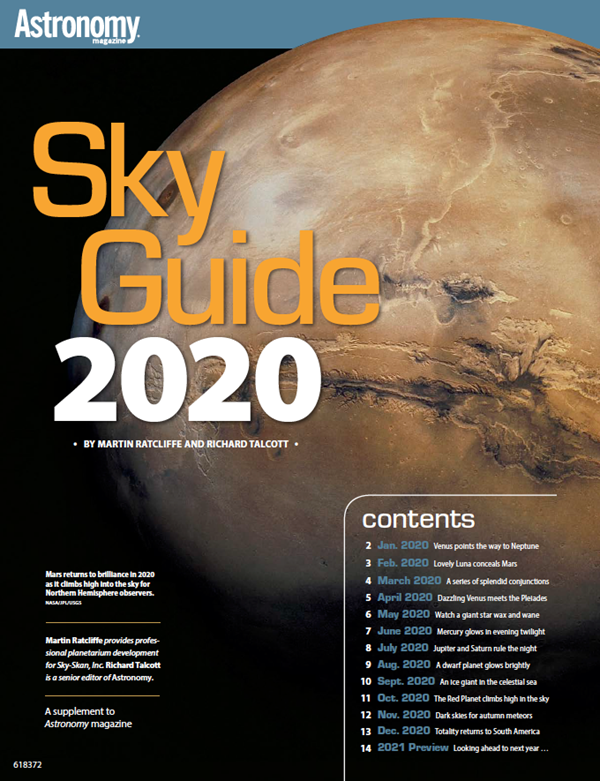2020 offers some excellent chances to view the planets of our solar system. Venus dominates the western evening sky from the beginning of 2020 until late May. But it shines brightest during April’s final week, not long after it slips past the Pleiades star cluster (M45) early that month. Mercury appears highest in the evening sky for 2020 during June’s first week, while Jupiter and Saturn reach opposition and peak visibility within a week of each other in July. Additionally, Mars makes one of its best opposition appearances in October. It won’t appear this big or bright again until 2035. The ice giant Neptune reaches opposition September 11, when it lies opposite the Sun in our sky and thus remains visible all night. That same month, the Moon passes 3° south of Uranus at midnight EDT on the 6th.
In December, totality returns to South America for the second time in a year and a half. On December 14, a total solar eclipse will occur in the skies above Chile and Argentina. Although this event is the highlight of 2020 eclipse viewing, an annular eclipse, where the Moon passes directly in front of the Sun but does not appear big enough to cover the entire solar disk, cuts a narrow track across Africa and southern Asia on June 21. And four additional lunar eclipses take place in 2020 as well, although the Moon each time only enters Earth’s lighter penumbral shadow, so the Full Moon won’t darken significantly.










